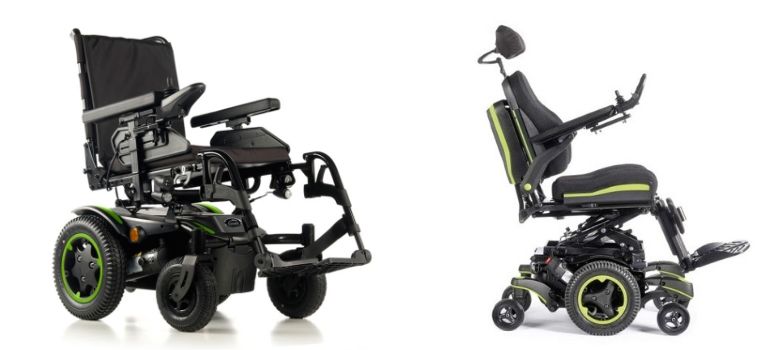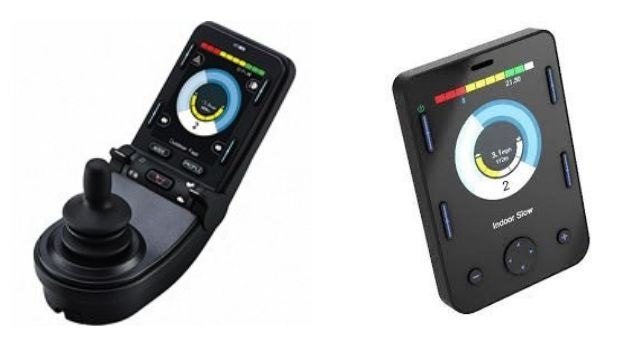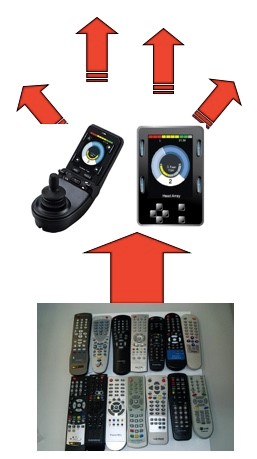Delt:
Take it offline!
This Education in Motion resource is also available as a printable PDF.
Download PDF
Abstract
The wheeled mobility devices industry has experienced a significant level of technological development over the last few years; this innovation entails not just an increased level of customisation of the aid to meet the user's needs, but also a range of solutions enabling the user to interact with ICT devices (e.g. smartphones and tablets) and with household technologies directly through the wheelchair's controls.
But how can the Power Wheelchair (PWC) effectively interact with the home environment? What is the potential of this interaction? This publication aims to find simple and quick answers to these questions.
Keywords
IoT (Internet of Things); ICT (Information Communication Technology); PMD (Power mobility devices); PWC (Power Wheelchair); Wheelchair; AT (Assistive Technologies); Electronics; Environmental control
Introduction
It seems that the assessment and choice of a wheelchair, as well as the user's training, are not yet considered priority tasks by many clinicians, thus leaving them to be managed only by the providers of mobility aids 1. We believe however that this state of things should be reconsidered, with the investment of appropriate resources and time, because:
- over the last few years there has been a remarkable increase in the quantity and in the level of customisation of the models available; furthermore, the manufacturers are focusing more and more on design and aesthetic features of their products, which are among the essential factors that promote their introduction and support their use
- wheelchairs, particularly powered ones, are wheeled mobility devices that can offer a range of automated posture settings controlled directly by the user, resulting in increased comfort and prevention of pressure sores, even in subjects with very severe disabilities
- the number of persons with disabilities who use a wheelchair is rising constantly, with a bigger increase among elderly people and people with disabilities, which means that manual or power wheelchairs are now used by many people who a few years ago, while being in the same situation, would not have adopted them; it is consequently possible to infer that this solution is becoming more and more accepted1, 2 ,3
- research underlines the fact that personal mobility, a function that wheelchairs can offer to those with mobility problems, gives people with disabilities the opportunity to increase their social inclusion and improve their quality of life.4, 5, 6, 7, 8, 9
However, in order for the wheelchair to fulfil this important function in the best possible way, it is necessary for it to be carefully chosen and customised, and for the user to be suitably trained on how to operate it 10, 11, 12: This means that the practitioners ought to be trained, competent and possibly specialised. We evince from the existing literature that in order to provide a satisfactory service it is vital for the professional advice to be focused on the resources, activities and wishes of the person with disabilities13, 14, 15.
Power Mobility Devices
The power mobility devices industry has witnessed a remarkable technological development over the last few years; this innovation is not limited to the adoption of new mechanical and electronic resources, but includes the offer of solutions allowing a high degree of customisation and levels of performance that until recently were considered out of reach, which includes the interaction with other technological devices of common use, firstly smartphones and tablets. When choosing from the wide range of power wheelchairs currently on offer, it is worth to focus the comparison on:
- main usage environments (indoors, indoors/outdoors, outdoors)
- driving configuration (rear-wheel, front-wheel, mid-wheel drive,all-wheel drive).
It is possible to add to these well-established categories another one that takes into account the opportunities offered by modern power wheelchairs in terms of being able to fit them with special/alternative joystick commands, environmental controls and connectivity modules for ICT devices (smartphone and tablet);
- comparison based on electronics expandability (expandable electronics, non expandable electronics) 16.
Most power wheelchairs are controlled by a joystick, called a standard proportional control, which is tasked with controlling both the propulsion and the direction of the wheelchair. It is called proportional because it works like a throttle; an increase in the tilt angle of the stick results in a proportional acceleration of the wheelchair.

Picture 1: Q200 Sunrise Medical electronic wheelchair with non expandable electronics
Picture 2: Q700 Sunrise Medical electronic wheelchair with expandable electronics
If the user is unable to operate the joystick, a wheelchair with expandable electronics can be fitted with alternative controls: mini or compact joystick, head arrays, chin controls, foot controls, Sip 'n Puff, switch controls, scanning controls, etc. Expandable electronics enable the use of smart technology, a real nervous system in which the functions of its various components (motors, automations, controls, etc.) are managed and programmed via data packets processed by artificial intelligence located in a single power module.
Expandable electronics allow to "follow" and adapt the wheelchair to the needs and characteristics of the user, even in the event of rapidly developing progressive diseases; this is an essential aspect to consider when choosing the wheelchair, because there are several models that can be provided with both types of electronics.
Direct environmental control
One of the most frequent requests from power wheelchair users is to be able to access environmental controls from the wheelchair, as well as managing mobile ICT (Information Communication Technology) devices such as smartphone and tablet. These devices can concentrate functions and applications that until recently could only be provided by cumbersome ICT equipment, but now they can be easily installed on power wheelchairs with significant benefits on the quality of life of people with disabilities and their care-givers.
Expandable electronics in wheelchairs are therefore offering what was considered not that many years ago as a potential new frontier, since the power wheelchair can be equipped with some integrated modules for environmental control enabling the user to interact with PC, TV set, as well as lighting, doors, windows, etc. by operating the same controls used to drive the wheelchair.
Environmental control modules are generally integrated in some joysticks (see picture 3) or LCD screen modules dedicated to special/alternative controls (see picture 4) which allow to interact through specific menus with domestic devices that are operated via IR controls (TV set, decoder, air conditioning unit, etc.)

Picture 3: CJSM2 “Advance” Joystick. Picture 4: Omni2 LCD screen
The environmental controls integrated module can learn and store the IR codes of every remote control in the house and retransmit them on request; these modules are therefore real programmable universal remote controls 16,17 (see picture 5).

Picture 5: Copying the IR codes of domestic remote controls
This interactive mode, which uses the wheelchair's technology to manage the environment, is called direct environmental control.

Picture 6: direct integrated environmental control
(see Part 2 in EIM Resources - October 2019)